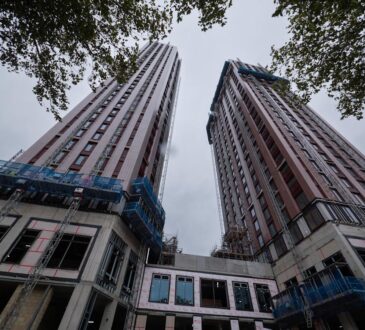
Lower interest rates, a strengthened rental market and more spending power could all contribute to a boost in UK house prices next year.
While the UK housing market has seen a number of positive changes so far this year, from a return to price growth and rebounding activity levels, to mortgage rates that are already almost 1 percentage point cheaper than last year, there is more to come in 2025.
This has led to MPowered Mortgages predicting a much faster acceleration in UK house prices, which have risen by an average of 2.8% over the past year, according to the Office National Statistics figures from August.
Although he doesn’t put an exact figure on it, Peter Stimson of MPowered Mortgages says that falling mortgage rates in particular will see buyers and investors (as well as those remortgaging) being able to borrow, in some cases, significantly more, which will likely push up UK house prices at a faster rate than we have seen over the past 12 months.
Earnings have also been on the up in recent months, while inflation has fallen back down to be more in line with the government’s 2% target. This means average households may begin to feel the pinch less, and an improving mortgage market could be the final push towards making an investment.
Stimson said: “Wages have grown by around 14 per cent in the last two years, according to the ONS, while house prices have seen little change.
“House prices are largely a function of mortgage affordability and what has stopped them growing over the last two years is a combination of high interest rates and lenders’ mortgage affordability stress test calculations.”
Better borrowing outlook
Overall, mortgage rates have reduced over the course of this year, despite a temporary uptick in the summer. According to Rightmove’s latest Mortgage Tracker, the average five-year mortgage rate is now 4.64%, which is down from 5.39% this time last year. For a two-year fixed, interest rates are now averaging 4.94%, compared with 5.85% last year.
According to Which?, the average buy-to-let mortgage is now 5.25%, down from 5.96% recorded two years ago. While it is still well above the 3.15% recorded five years ago, it means landlords are already able to find much cheaper deals – with predictions that these rates will only improve over the coming year.
Investment bank Goldman Sachs has put out an ambitious prediction of the Bank of England cutting its base rate to 2.75% by the end of next year, while other analysts have suggested it will come down to 3.5% from its current level of 5%.
Looking at how this could affect mortgage rates – and as a knock-on effect, UK house prices – MPowered Mortgages predicts this could mean borrowers will be able to borrow up to 18% more than they can now. Lenders may relax their “stress testing” affordability checks, says the broker, because standard variable rates (SVRs) will go down, boosting borrowing power.
Stimson points out that people who can currently borrow up to £200,000 may be able to borrow £236,000 next year, and this could be a real boost to UK house prices and the market.
“Lenders base their affordability not on the rate of interest the borrower will pay on their mortgage, but on a rate on rate of interest they “could” pay in the future,” he said.
“They will check the borrower could still afford their monthly repayments, plus all other necessary budgeted expenditure, if mortgage rates were to increase to this amount.
“As base rate drops, so will SVRs and hence the stress rate calculation with it.”
UK house prices could benefit property investors
Signs of strength returning to the property market and rising UK house prices can provide added ammunition for investors looking at a time to enter the market, or to expand their existing portfolios. While the buy-to-let landscape has been affected by tax changes and new regulations, the market fundamentals continue to attract people to invest.
According to Rob Dix, co-founder of Property Hub, 2025 could be a more positive year for landlords too, and not just because of UK house price rises.
With an ongoing shortage of supply in many areas for the rental market, rents are continuing to be pushed up, with data from HomeLet showing the average rent has increased by 40% since June 2020. Gross rental yields have also increased, and finding a top-yielding property and location has been high on the agenda for property investors as growth in UK house prices has slowed.
Dix said: “A property boom would have sounded ridiculous a couple of years ago, but it’s seeming increasingly possible.”
“The sector has had everything thrown at it – fast-rising interest rates, new legislation, rumours around tax treatment – and prices are still barely below their 2022 peak.
“Importantly, in inflation-adjusted terms, prices have actually fallen by more than 15 per cent.
“As rents have risen fast, this has improved yields for investors and made investing in many areas more attractive than it has been for a long time.’
“Sentiment among the investors we speak to is also noticeably better than it has been for a long time.”
While acknowledging that this could change if, for example, the situation in the job market changes, as things stand there is potential for a significant rise in UK house prices in 2025.
If you’re looking for your next property investment opportunity, get in touch with BuyAssociation today to learn more about our current and upcoming projects in some of the most lucrative parts of the UK. To keep up-to-date with the latest property market trends, including UK house prices, see our news page.




